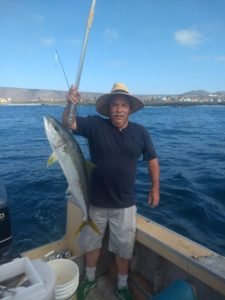This is the time of year to be thinking about giving. If you are still looking for a group worthy of your hearts and thoughts this holiday season, please consider adopting a Kumiai (Kumeyaay) or other local family for Christmas. There are 65 families in the Kumiai community, an Indian reserve one hour into the hills above La Mision, and so many other families also in the hills that have no one to think about them.
Food boxes will feature chicken, fresh produce (purchased the day before delivery), and dry goods, priced at $20. Blankets are $10. Or you can make up your own gift box of food, goods, and gifts, and bring to one of the drop off locations. In return, you will receive a Christmas Thank You card and photo from the family you have helped. You are even invited to accompany Sara and group to San Jose de La Zorra to deliver the holiday gifts.
The deadline is near! The last day to adopt a local or Kumiai family is December 10! For additional information, contact Sara Vega at 661-850-4855 or email to saraenmovimiento@hotmail.com, or contact her on Facebook on either of the pages “Sara Vega” or “Sara.enmovimiento.”
There are several ways to donate to this philanthropic cause: Cash donations may be made through PayPal by contacting Sara at her email address. Or you may make a donation at any local OXXO, into the account 4766-8403-0084-5794. Save your donation receipt and send a photocopy to Sara so she knows whom to thank.
You may donate non-perishable food items, blankets, jackets, or any other winter-related item to either Charley’s Place (k 37) or Betty’s Burgers (on the boulevard just south of the 7-11 / cuota on and off ramps.
Anyone wishing to join the caravan to the Kumiai camp, contact Sara Vega ASAP for cabin reservations, instructions, and logistics of the trip.
The need of the people is great and varied. If you are building your own donation box and in need of suggestions, please contact Sara. Merry Christmas!













